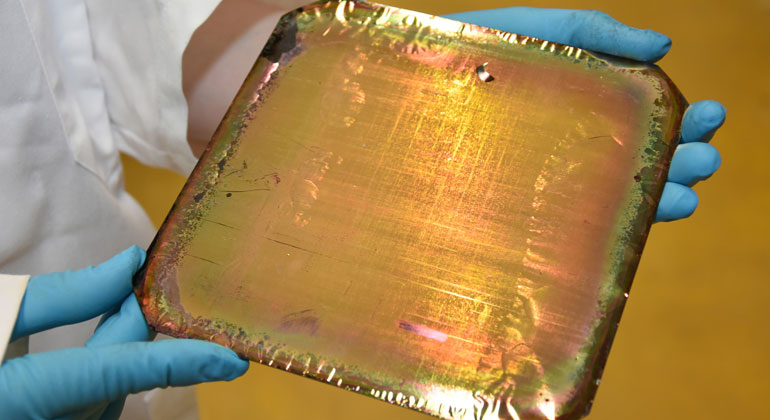Silicon as a new storage material for the batteries of the future
Longer life times, larger ranges and faster recharging – developments such as electric mobility or the miniaturisation of electronics require new storage materials for batteries.
With its enormous storage capacity, silicon would potentially have decisive advantages over the materials used in commercial available lithium-ion batteries. But due to its mechanical instability, it has so far been almost impossible to use silicon for storage technology. A research team from the Institute for Materials Science at Kiel University, in cooperation with the company RENA Technologies GmbH, is developing anodes made of 100% silicon, as well as a concept for their industrial production. Through targeted structuring of its surface at the micrometer level, the team can fully exploit the storage potential of silicon. This opens up a completely new approach to rechargeable batteries, as well as the energy storage of tomorrow. This week, the partners are presenting the production and potential use of silicon anodes at the Hannover Messe (23 – 27 April), at the CAU booth (Hall 2, C07).
Silicon has long been a potential candidate for the e-lectric mobility, according to materials scientist Dr Sandra Hansen. “Theoretically, silicon is the best material for anodes in batteries. It can store up to 10 times more energy than graphite anodes in conventional lithium-ion batteries.” Electric cars could drive further, smartphone batteries could last longer, and recharging would be significantly faster. An additional advantage of the semiconductor material is its unlimited availability – after all, sand consists largely of silicon dioxide. “Silicon is the second most abundant element on earth after oxygen, and thus an almost unlimited cost-effective resource,” said Hansen.
However, so far the life time of silicon anodes was far too short to really use them in chargeable and rechargeable batteries. The reason for this is the high sensitivity of the material. During charging, lithium ions move back and forth between the anode and cathode. Silicon, as the material with the highest energy density, can take up a remarkable number of lithium ions. While doing so, it expands by 400 percent, and would break in the long run.
At the Institute for Materials Science in Kiel, silicon has been researched for almost 30 years. The findings to date, combined with the silicon experience of RENA Technologies GmbH gained from solar technology, should contribute to producing battery anodes made from 100% silicon. This would enable maximum use of their storage potential – anodes in conventional rechargeable batteries contain only approximately 10-15 percent silicon. To pursue this goal, the joint research project “Development and characterisation of large, porous Si film anodes for lithium-sulphur-silicon energy storage” (PorSSi) kicked off last year, which has gained a total of one million Euros in funding from the Federal Ministry of Education and Research (BMBF, more details see below). The result at the end should be a high-performance silicon battery, along with a concept for its cost-effective industrial production.
“The cooperation between Kiel University and RENA is a highly-efficient combination of decades of experience in fundamental research with industrial process and equipment development expertise,” emphasised Dr Holger H. Kühnlein, Senior Vice President of Technology at RENA Technologies GmbH. “In this way, we can transfer the results from university research into industrial applications as soon as possible,” added Professor Rainer Adelung, head of the Functional Nanomaterials working group at Kiel University, where many of the discoveries to date about silicon were made. Adelung: “This is real innovation transfer.”








